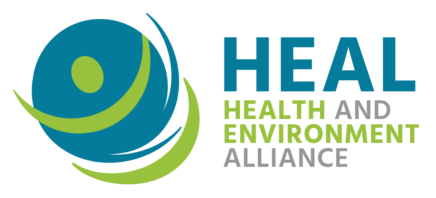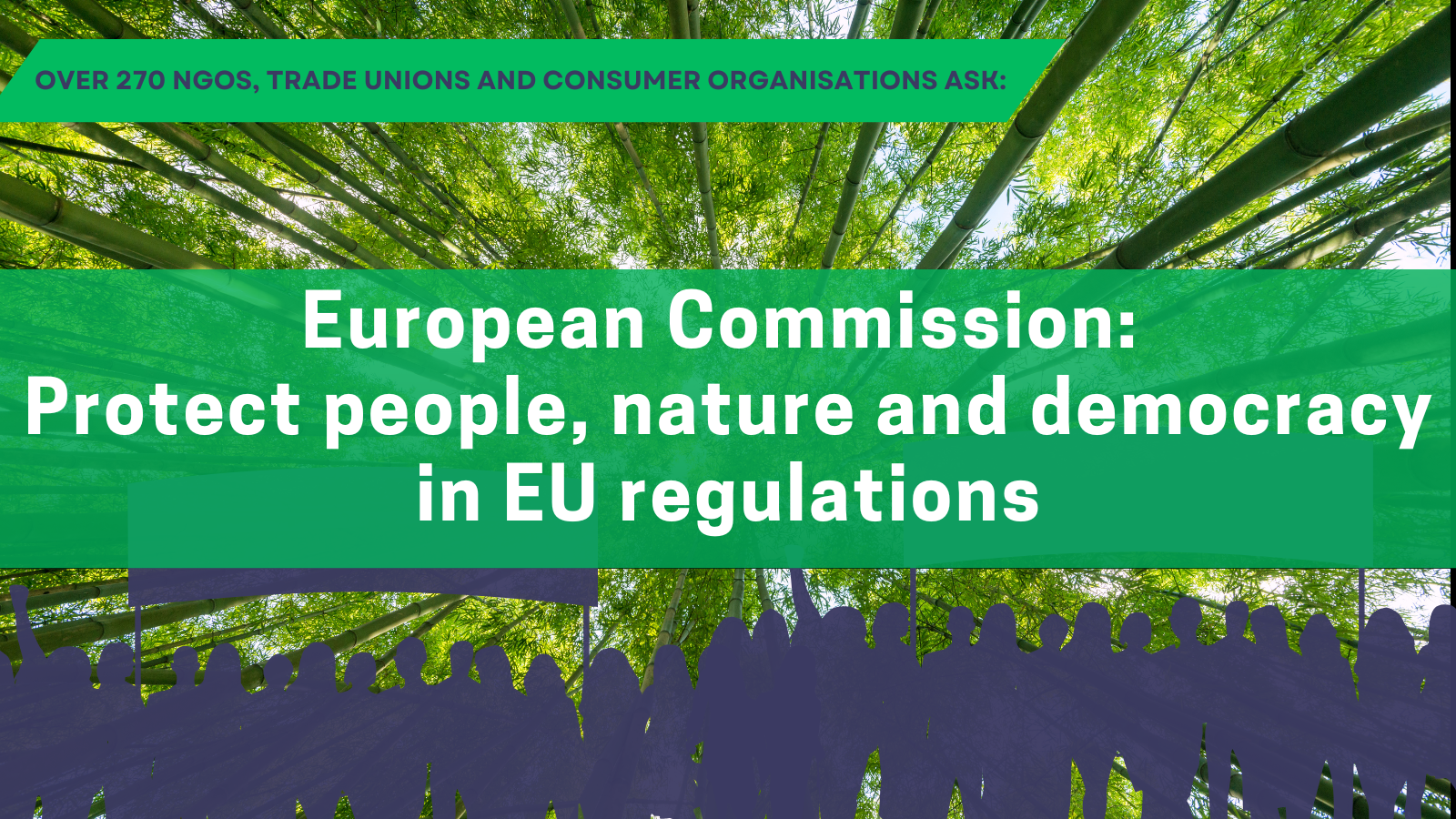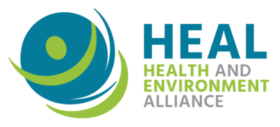The ban of BPA in food contact materials will help protect people from these endocrine disrupting chemicals (EDCs), that have also been classified as toxic for reproduction since 2006 under REACH. Exposure to Bisphenol A and other bisphenols is associated with breast cancer, infertility, early puberty, diabetes and obesity, and neurological disorders in children. But this restriction focuses on one area where bisphenols are widely used – the work to protect people's health from the group of chemicals, and in particular children is therefore far from over.
Per- and polyfluoroalkyl substances (PFAS) also known as “forever chemicals”,can take up to 1,000 years to break down in the environment while some do not dissipate at all. They also accumulate in our bodies and many of them have been associated with serious health conditions, including different types of cancer, thyroid disease, immune dysfunction and hormone disruption.
Due to their widespread use and highly mobile nature, PFAS are in our water, food, homes, and nearly all our bodies. By way of illustration, annual health costs related to PFAS exposure is estimated to range between 52-84 billions Euros for Europe alone. Some 17,000 sites have been identified for PFAS contamination around Europe and 12,5 million Europeans are living in communities with drinking water polluted with PFAS.
Forever chemicals are a global threat to our health and our environment, and the only way to address this is through a highly comprehensive and protective regulatory effort worldwide. For these reasons, HEAL welcomed the proposal for a restriction on per- and polyfluoroalkyl substances that was submitted to the European Commission by Germany, Denmark, the Netherlands, Norway and Sweden in January 2023. This is to date the largest ever proposed restriction under the EU Chemicals Regulation REACH, due to its unprecedented scope both in terms of the range of substances and uses covered.
While the PFAS restriction proposal is a much needed step, HEAL argues that its effectiveness would be improved by minimising derogations for all non-essential PFAS uses and by reducing the time frames of derogations whenever possible. Derogations should be limited only to those PFAS uses that are essential for health, safety and the functioning of society, and for which there are currently no safer alternatives. Time limits should be set for all derogations, and no derogations with direct human exposure should be allowed. Finally, HEAL calls for all derogations to have the same reporting requirements.
Strengths of the restriction proposal:
HEAL commends the unprecedented scope of the restriction proposal, which is necessary to properly address challenges PFAS exposure poses to health and environment. More specifically, we highlight the following strengths:
- Persistence as justification for restriction
HEAL supports the use of persistence as a sufficient justification for restricting PFAS (the so-called P-sufficient approach). This approach is based on wide scientific consensus and offers a comprehensive regulatory framework for better protecting our environment as well as present and future generations’ health from irreversible harm.
- Broad definition of PFAS
HEAL welcomes the proposed restriction’s broad scope – that employs the OECD 2021 definition for PFAS – including a whopping 10,000 substances. Specifically, the inclusion of extremely persistent and widely used fluoropolymers and perfluoropolyethers, both of which have growing life-cycle emissions and a high likelihood of human exposure, is crucial for the effectiveness of the restriction in the future. Their inclusion in the restriction’s scope preemptively avoids regrettable substitution, reducing long-term harmful exposures to humans and the environment.
- Transparency and burden of proof on industry
HEAL supports the proposal of granting 12-year derogations to be tied to the adherence to strict information requirements. This is in line with the principle in REACH on placing the burden of proof regarding the lack of safer alternatives on industry – and is key in strengthening industry accountability and transparency.
Limitations of the restriction proposal:
HEAL encourages addressing the following limitations in the current proposal:
- Unlimited derogations
HEAL does not support any unlimited derogations (with the exception of use relating to the targeted analysis of PFASs in the monitoring of these substances). Regulatory timelines are crucial to driving innovation of safer alternatives
- Exclusion of pesticides and biocides
HEAL calls for PFAS pesticide and biocide active substances to be regulated under the PFAS restriction until other legislations offer a more protective framework for these persistent substances. PFAS used in the production of pesticides and biocides cause direct emissions into the environment, and subsequently can result in exposure of humans. Yet, the existing EU regulatory frameworks for these substances are not protective enough when it comes to addressing the persistence of PFAS. In the context of the current restriction proposal, a more accurate baseline estimate of the number of current active substances in pesticides and biocides, more thorough reporting requirements, and clear guidelines for coordination between the responsible authorities under the respective legislatives frameworks are needed.
- Derogations linked to food contact materials and drinking water applications
HEAL does not support derogations related to the use of fluoropolymers and perfluoropolyethers in food contact materials (FCMs), including drinking water applications. For instance, there is scientific evidence of PFAS migration from materials used in water pipes. As contaminated drinking water exposes humans directly to PFAS, more critical evaluation of the necessity of PFAS use in drinking water applications is required. Shorter derogations would encourage a swift shift to safer, more sustainable alternatives.
- Inconsistencies with reporting requirements
The proposed restriction should establish reporting requirements not only for derogations with a duration of 12 years and applications of fluorinated gases, but also for 5-year derogations. Consistency would incentivise complete data collection and transparency, while also relieving the burden placed on authorities.
- Lack of clear oversight and review processes
Finally, the restriction proposal must outline review processes, to ensure the latest scientific evidence is taken into account when determining whether granted derogations can be continued. Therefore, HEAL recommends including monitoring milestones, and industry obligations to provide new analytical methods and technology to detect and remove PFAS pollution, and requirements to contribute to cover costs of environmental monitoring.
Next steps
By the end of the consultation period, ECHA had received a staggering 5 600 comments from over 4 400 stakeholders. These comments will be reviewed by ECHA’s scientific committees, the Risk Assessment Committee (RAC) and the Socio-Economic Analysis Committee (SEAC), and by the five countries that submitted the initial proposal. The proposal may then be updated based on the input to the consultation.
RAC and SEAC will then respectively discuss the matter over a series of meetings, developing independent opinions. Once these are adopted, they are communicated to the public and delivered to the European Commission by ECHA. The Commission and EU Member States will then decide on the restriction.
Resources:
Responses to Public Consultation by HEAL members:
- European Federation of Allergy & Airways Diseases Patients´ Association (EFA)
- European Respiratory Society
- Générations Futures
- Pesticide Action Network (PAN) Europe
Joint report on PFAS in pesticides by Générations Futures and Pesticide Action Network.
For more information on how PFAS pollution affects communities across Europe, see HEAL’s PFAS website.
Per- and polyfluoroalkyl substances (PFAS) – ECHA.
The ‘forever pollution’ map by Le Monde allows you to explore PFAS contamination sites in Europe



